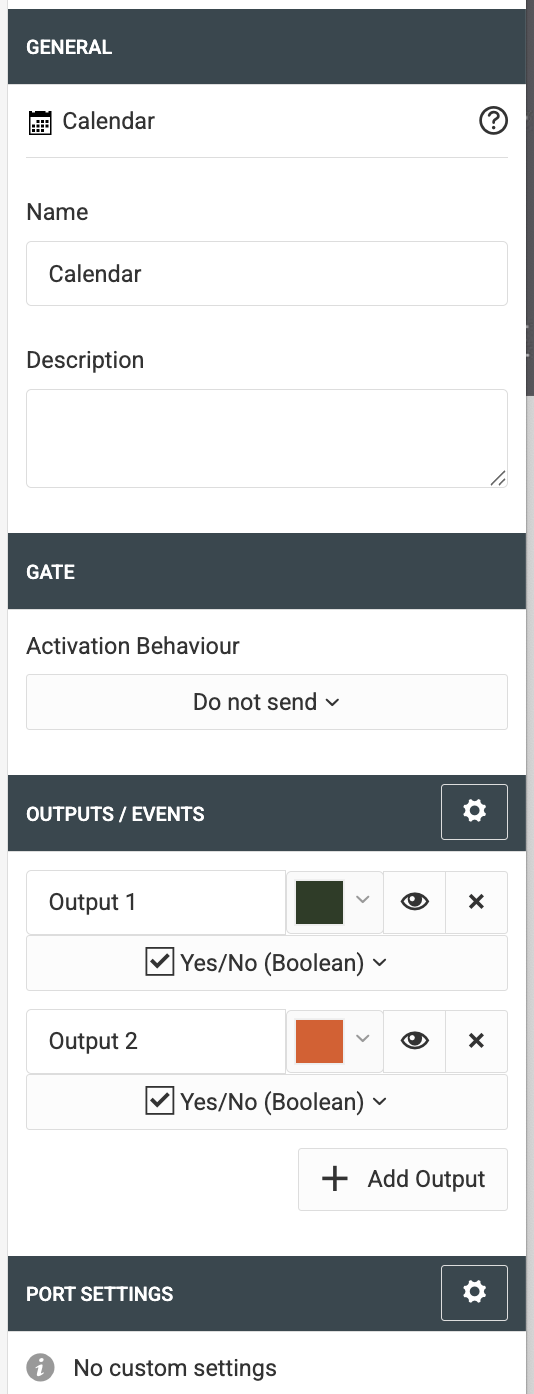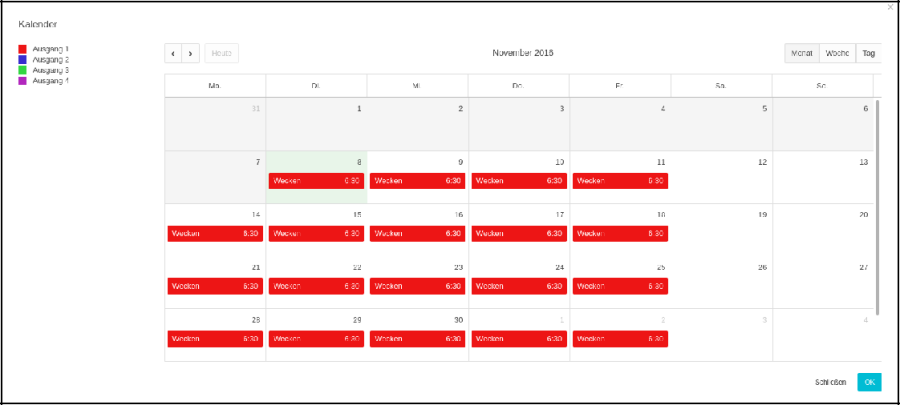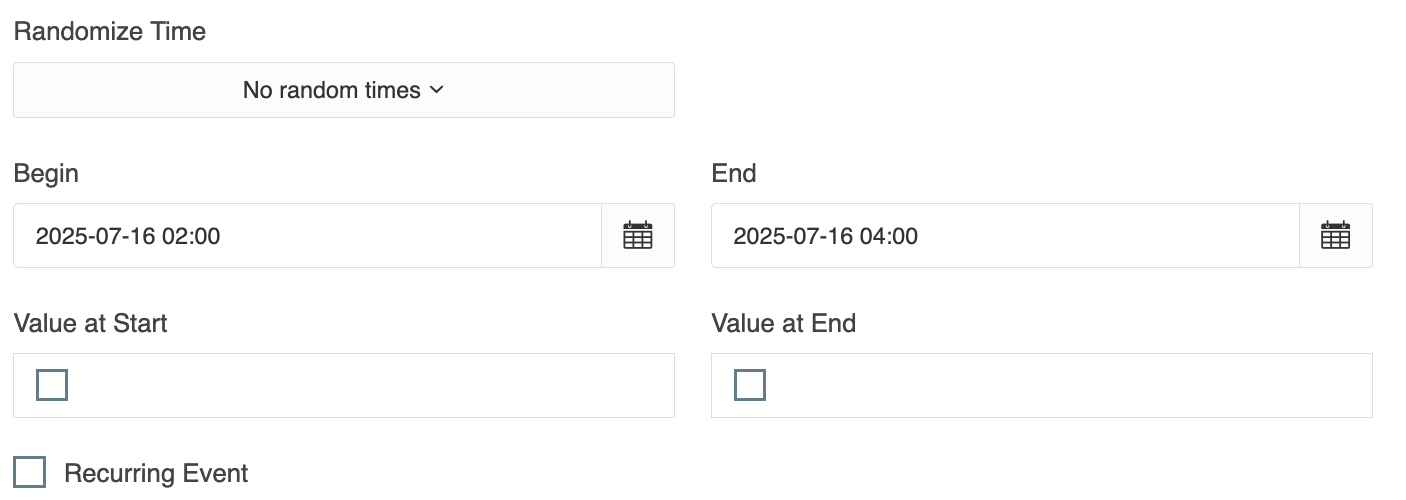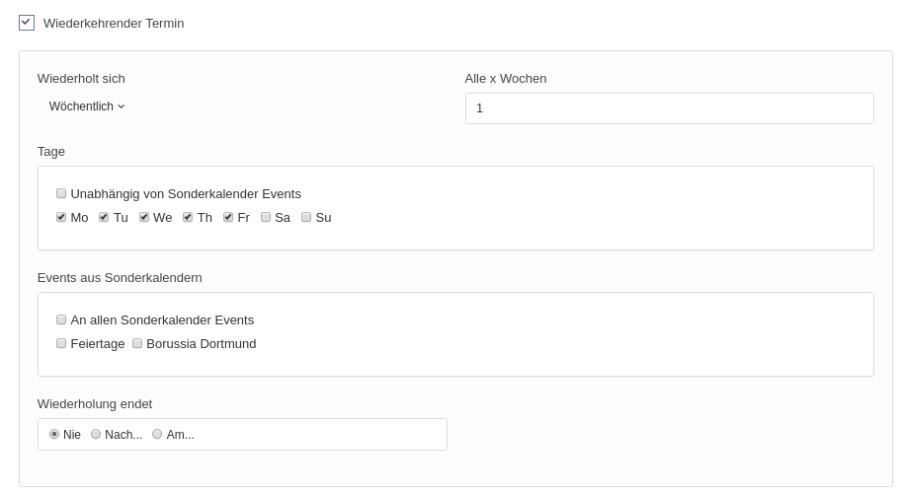Calendar
The calendar in the logic editor makes it possible to create time and date-dependent logic functions. This allows switching processes (so-called events) to be automated on specific days, weekdays, times or periods - e.g. for public holidays, weekends or seasonal processes.
In addition to one-off events, the calendar also offers the option of defining ‘recurring events’. For example, daily, weekly or monthly recurring events can be mapped automatically and flexibly.
By combining with other logic elements, you can realise complex controls that react flexibly to the calendar process. This chapter explains the available calendar elements, their configuration and possible uses in the logic editor.
Contents
Inputs and outputs
Inputs
GATE (see Logic Elements | Datapoint-Gate)
SDAY
This input can force the calendar into special day mode, if such a day has been configured in the Central Calendar. Which input value sets a certain special day state depends on your individual special calendar configuration.
Outputs
OUT (1–…)
Up to 20 outputs can be configured.
Configuration

Using the
 symbol, new outputs can be added.
symbol, new outputs can be added.Using
 you can disable individual outputs
you can disable individual outputsUsing
 you can delete an output. (This may damage the assignment of the calendar entries.)
you can delete an output. (This may damage the assignment of the calendar entries.)The colour selection facilitates the overview of schedule management
Schedule management
Use the "Configure" button (  ) to enter schedule management.
) to enter schedule management.

On the left-hand side, you will see a list of all outputs and their assigned colors. The events for each output are indicated with the corresponding colour.
In order to create a new event, use the mouse to click an empty area of the calendar sheet. In order to edit an event, click the event.
Event

Name
Name of the event
Output
Assignment to an output
Event type
Each event may be
an individual point in time
have a beginning and an end
cover an entire day
According to the event type you can edit one or two time points.
Random time range
The random time range can be configured in minutes.

There are four options for random time range
Start
Only the start of the event is delayed.End
Only the end of the event is delayed.Start & end
Start and end are delayed independently.Start & end parallel
Start and end are delayed parallel.
The random time range may be in both directions in general.
Regarding a value of 5 minutes, the event may take place in a range of 5 minutes prior to and 5 minutes after the defined time.
It is ensured that the start of the event may never be after the end of the event, despite random time range. Of course, this is only applicable to events sending values at the beginning and in the end.
Value
The value to be sent. Depending on the event type, you can specify a second value here.

The Data Types can be chosen for each value individually.
Occurrences
An event can be configured such that it is repeated at fix intervals.
The configuration of repetitions is adapted to common calendar applications.

Here, the particularity is to take into account special events of the central calendar. See chapter (Special) Calendar.
The "Send also if a special calendar event falls on a selected weekday" option ensures that the occurrences are executed as configured. If the option is disabled, a scheduled occurrence is not performed if a special event takes place.
Regarding the options for "Special calendar events", the situation is that this event is repeated even on days including the corresponding or all special events.
Important: It must be noted that there may always only be one active special event per day. Only the active special event having the highest priority is taken into account. The priorities are defined in the (special) calendar by the order of the calendars.
///
